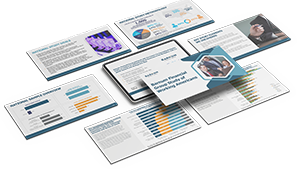
If a former student is past due on Federal student loans, there is an obvious way to bring the loan account current. The borrower simply pays the past due amount and continues on with his or her payment plan. Most delinquent borrowers are unable to do this. There are two options for temporarily resolving or avoiding delinquency are available from the U.S. Department of Education (ED); Deferment and Forbearance. If repayment is too difficult, a borrower can request to put their monthly payments on hold.
The difference between Deferment and Forbearance pertains to the treatment of interest. Each type of Federal student loan has a unique set of terms and conditions, determining the way interest is treated. Loan interest can continue to accrue while a loan is in either Deferment or Forbearance. So, a delinquent borrower should consider newly available ED payment options that are known as Income-Driven Repayment (IDR) plans. IDR plans are more affordable than a standard repayment plan that is based on the total loan amount spread over a fixed period of time.
Deferment:
With Deferment, interest doesn’t accumulate while payments are paused on direct subsidized loans, the most common type of student loan. This is due to their status as need-based student aid. If a borrower has other types of Federal loans (Direct Unsubsidized Loans, Direct PLUS Loans), interest will continue to accrue.
Unpaid interest will be capitalized and added to the borrower’s loan balance. Accrued interest must be repaid during the term of the loan starting after the borrower exits Deferment. In effect, this means that the borrower is paying interest on his or her unpaid interest. A borrower may choose to make interest-only payments during the Deferment period.
There’s another type of Deferment for those who have left college but decide to resume attending. If a borrower returns to college at least half time, their loans will be put into an “In-School Deferment”. Interest doesn’t accrue on direct subsidized loans during an In-School Deferment but it does for the other types of loans.
Forbearance:
Forbearances have different eligibility criteria. Some types are mandatory and must be granted by the borrower’s Federal Loan Services Provider. Other types are discretionary and may be granted by the Provider based on their own rules.
With Forbearance, a borrower can pause their payments or temporarily make smaller ones. A Forbearance will not be granted for more than 12 months at a time. Also, there’s a cumulative limit of three years over the life of the loan.
The borrower is responsible for unpaid interest that accumulates during a Forbearance on all types of loans, including direct subsidized loans. When the borrower exits Forbearance, he or she must arrange to repay the interest over time.
IDR Plans
IDR plans serve as a safety net for borrowers with Federal student loan debt. They help borrowers who lose their job, suffer a steep decline in income, or have difficulty making payments for other reasons.
IDR plans are based on the borrower’s income and family size rather than on the loan amount and a fixed term. IDR’s are adjusted annually, if necessary, with new information provided by the borrower.
Eligible borrowers may enroll in either the ED’s Pay As You Earn (PAYE) plan, the Income-Contingent Repayment (ICR)plan, or, possibly, the Save as You Earn (SAVE) plan. Borrowers can use the Federal Student Aid Loan Simulator to evaluate their situation and find the best IDR repayment option for their needs.
1. The PAYE Plan:
The PAYE plan calculates monthly payments based on a borrower’s income and family size. The amount a borrower pays each month is based on their earnings, not the balance of the loan amount. And the benefits of the PAYE plan include low payments for borrowers with low incomes and large student loan debt.
The PAYE plan works as follows:
- Payments top out at the amount of a 10-year standard repayment plan.
- The monthly payment is 10% of the borrower’s annual discretionary income, divided by 12.
- Continuing eligibility is dependent upon on the borrower’s adjusted gross income, family size, and location and must be recertified annually.
- If a borrower files taxes separately from their spouse, their individual income is used to calculate payments. If filing jointly, the combined income is used.
- The remaining balance on an PAYE plan loan is forgiven after 12 or 20 years, depending upon the initial balance of the loan and past periods of repayment, deferment, and forbearance.
Forgiven debt is considered taxable income to the borrower, but a temporary tax rule exempts loan balances forgiven through December 31, 2025.
2. The Income-Contingent Repayment (ICR) Plan
Under the ICR plan, monthly payments are based on income and family size, allowing for lower payments for borrowers with low income. The monthly payment is the lesser of either 20% of discretionary income or the amount that the borrower would pay on a standard repayment plan over a 12 year term. Borrowers are eligible for forgiveness of their remaining balance after 25 years.
The ICR plan offers lower monthly payments to low-income borrowers. This may result in a higher total repayment amount over the life of the loan if the payment term due is extended and to interest is capitalized.
3. The SAVE Plan
The SAVE Plan is suspended from a 2024 Federal court injunction that prevents the ED from signing up new borrowers.
The principal advantage of the SAVE plan is its lower payments. Monthly payments are based on a percentage of the borrower’s discretionary income minus a specific poverty guideline amount. A change in June 2024 lowered the percentage of discretionary income used to calculate of payments to 5%. If a borrower makes payments on the SAVE plan for 20 or 25 year, any remaining balance is forgiven.
The SAVE plan was rolled out in August 2023, but was suspended in July 2024 due to lawsuits filed by Republican-led states. This led to an injunction being issued by a Federal District Court.
Federal Student Loan Service Providers have put SAVE borrowers in an interest-free administrative Forbearance. This applies only to the 414,000 borrowers who successfully enrolled in the SAVE plan prior to the Federal Court’s injunction. These borrowers do not owe a loan payment until December 2025.
The 8 million+ borrowers, enrolled in the SAVE plan after the injunction, may not be able to choose the SAVE plan. This is because the Supreme Court declined to hear the ED’s appeal in August 2024. However, the Court may elect to consider the appeal in the future.



